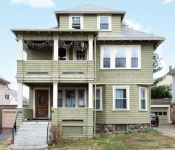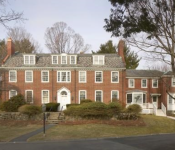Photo: Paving work underway along Belmont Street.
Despite construction equipment on the road and travel limited to single lanes along one of Belmont’s busiest throughways, the major paving work along the Belmont Street/Trapelo Road Corridor is “on schedule,” according to construction officials at the work site.
The laying down of several inches of asphalt should be completed by the end of the construction day at 6 p.m., on Tuesday, June 30.
A final topcoat of paving material will be applied along the entire reconstruction route when the project is completed early in the spring of 2016.
The paving work from Cushing Square (at the intersection of Trapelo Road and Common Street) to the corner of Belmont Street and School Street is part of the $17 million reconstruction of the 2.5 mile route from the Waltham to the Cambridge town lines.

































